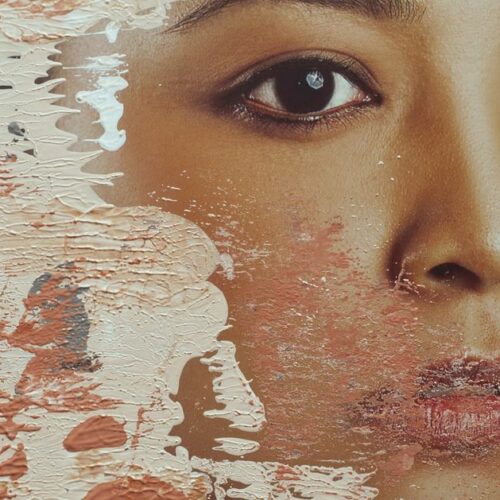Where your skin breaks out reveals more about your beauty and lifestyle habits than you think. Each area of the face can break out for different reasons, whether it be diet, the hair products or beauty treatments that you use. Unsure why pimples keep popping up on your forehead while the rest of your complexion is clear? Follow this guide to prevent future skin-flammation (but always consult your dermatologist before making any changes to your skin care routine).
If you break out on your chin …
… consider if it’s that time of the month. “In women, breakouts on the chin can be very hormonal in nature,” said Dr. Deanne Mraz Robinson, a board-certified dermatologist. “This means that the week before our period, as our hormone levels rise, our oil or sebaceous glands become enlarged and can lead to deep cystic breakouts.”
Dr. Jacquelyn Dosal, a board-certified dermatologist at Skin Associates of South Florida, attributes lower jaw acne to a common behavior you may not be conscious of. “While sitting at a desk, people will often rest their chin in their hand,” Dosal explained. “Not only does that deposit bacteria to the skin, but the pressure and compression that come from resting your head in your hand create more blockage of the oil glands, leading to backup and pimples.”
If you break out on your forehead …
… make sure that your hair products stick to only your strands. “One of the biggest modifiable factors can be making sure hair products such as hairspray, dry shampoo and gel don’t spray on to the forehead,” Dosal said. Ingredients catered specifically to hair are likely to not have the same benefits on skin.
Additionally, Dosal advises to be cautious of hats and helmets worn near the forehead. The heat and friction caused by wearing a hat blocks hair follicles, which may result in acne. Try wearing loose hats that don’t rub up against your skin, and make sure to wash hats and wipe down helmets at least once a week.
If you break out on your nose …
… be more attentive to oil control. “The bacteria responsible for acne, called Propionibacterium acnes, thrives in the T-zone, causing inflammation,” said Dr. Dan Belkin, a board-certified dermatologist at New York Dermatology Group. Wearing face masks during COVID has not helped — the material traps dirt and oil in pores. Avoid wearing makeup underneath your mask, especially on your nose if that’s where you’re prone to breakouts. If you must, find a breathable mask that doesn’t prevent moisture from being released. If these quick fixes don’t solve the issue, Belkin maintains that certain medications, products or procedures can reduce oil or acne bacteria.
If you break out on your cheeks …
… avoid foods with a high glycemic index, such a refined sugars, white rice and white bread. “Cheeks can be a common site of acne cysts, especially the lower cheek. This can be due to food high in glycemic index,” Robinson said. These foods cause our blood sugar to rise higher and more quickly, which leads to deregulated insulin levels and inflammation throughout the body. Inflammation is linked to the production and oxidation of sebum in our hair follicles, which contributes to breakouts. Robinson says that by lowering inflammation throughout the body, follicles are less hospitable to the P. acnes bacteria that causes acne.
Dosal also associates cheek acne with cell phones being pressed up against the area. Phones are said to carry 10 times more bacteria than a public toilet seat, so dirt from your device, in combination with sweat and oil on your skin, can easily lead to flare-ups.
If you break out above the eyebrows …
… take a break from getting your brows waxed. “The area above the eyebrows is likely to get clogged if wax is applied,” Robinson said. “That region is rich in sebaceous glands, therefore making it prone to blackheads and whiteheads.” The heavy concentration of oil glands above the eyebrows means that any waxing, plucking, or tweezing is likely to irritate the area.
“If your acne is only localized to the brow area, you may have an overgrowth of pityrosporum,” Belkin said. “This is a yeast that can mimic acne by causing inflammation in the hair follicles.” To target pityrosporum, Belkin recommends over-the-counter clotrimazole cream or natural tea tree oil.





